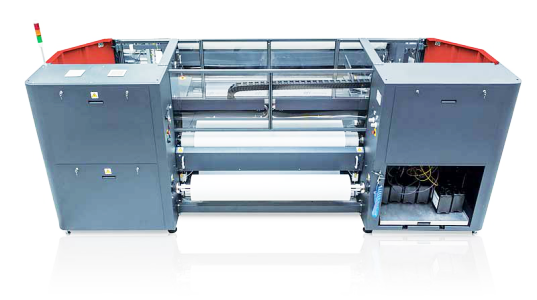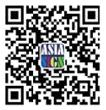
Wide-format Graphics: Print trends, opportunities and challenges
宽幅打印在标识行业的机遇与挑战
The digital printing of wide-format graphics is rapidly growing across North America. Market research firm InfoTrends expects volumes to rise from about 460 million m2 (4.9 billion sf) in 2015 to 849 million m2 (9.1 billion sf) in 2020, nearly doubling over the five-year span and demonstrating a compound annual growth rate (CAGR) of 13.1 per cent.
近来,宽幅数字打印在北美地区得到了迅速发展。市场研究公司InfoTrends预计,市场份额将从2015年的4.6亿平方米(约49亿平方英尺),增加到2020年的8.49亿平方米(91亿平方英尺),比五年增长了近一倍,呈现出的复合年均增长率(CAGR) 为13.1%。
This growth can be largely attributed to new business opportunities. The rise of aqueous, durable aqueous ‘latex,’ dye sublimation and ultraviolet-curable (UV-curable) inks is expected to more than offset any concurrent decline in solvent-based inks. Indeed, the very diversity of the ‘ingredients’ used in the sign and graphics industry is what will keep it on an upward trajectory.
这一猛烈的增长趋势主要归因于——新的商机。水性耐用胶乳、升华染料和紫外线固化(UV可固化)油墨的兴起,将替代溶剂型油墨,导致溶剂型油墨使用量下降。事实上,在标识行业中,随着技术不断地提升,会有更多合适的材料涌现,替代之前的产品。
There is clearly a great deal of untapped potential in the wide-format graphics market. Businesses that can leverage new opportunities will be well-positioned for future success.
显然,宽幅打印在市场中有很大的潜力,企业可以利用这样的新机会,为未来的成功打好基础。
A brief background
简要背景
The first generation of solvent wide-format printers, which hit the market around 1999, were really just aqueous printers that incorporated new solvent-based inks and included a basic raster image processor (RIP). They produced about 7 to 11 m2 (80 to 120 sf) per hour.
1999年,第一代溶剂型大幅面打印机出现在市场上,也可称为含水打印机,引入了新的溶剂型油墨,并包括基本的光栅图像处理器。每小时生产范围约7至11平方米(80至120平方英尺)。
There was a fair amount of confusion at first about which types of banners and self-adhesive media to use with these printers. The market quickly migrated to uncoated stock, primarily due to its low cost.
这个市场得到迅速发展,主要的原因是由于这种打印的成本低,但值得注意的是,不同类型的横幅、不干胶介质与宽幅打印机一起使用,会导致不同的问题出现。
The machines typically used one printhead that split into four or six channels. Those with more channels could produce smoother skin tones in graphics, but also slowed down production. Multiple-printhead machines began arriving around 2006.
多头打印设备从2006年开始兴起,宽幅打印机通常使用的打印头分为四个或六个,多种打印头可以放慢生产速度,创造出质量更高、表面更平滑的图形。
In 2011, by which point solvent printers had become very competitively priced, the first latex printers were introduced. These water-based inkjet machines encountered some early issues relating to startup and heating time and media warping, but have since captured much of the solvent and aqueous dye/pigment inkjet market across North America and Europe. InfoTrends expects the installed base of latex printers will enjoy a CAGR of 15.4 per cent from 2015 to 2020.
在2011年,随着溶剂打印机的价格上涨,变得非常具有竞争力,市场引进了第一台乳胶打印机。起初,这些水性喷墨设备启动或者热量增加时,会出现一些问题,但是后来慢慢的占据了北美和欧洲的溶剂和水性染料喷墨市场。InfoTrends预计,乳胶打印机的安装基数将在2015年至2020年期间,实现15.4%的复合年增长率。
Meanwhile, the soft signage segment of the industry continues to evolve. High-volume dye sublimation printing of textiles for apparel has been scaled down for use in sign and graphics shops, with presses available in 1.8 to 3.4-m (5.9 to 11.2-ft) widths.
同时,标识行业的软标牌业务也在不断发展,用于服装纺织品的大批量染料升华印刷量已经缩小。用于标识商店的印刷机的宽度为1.8至3.4米(5.9至11.2英尺)。
And while soft signage started with the use of dye sublimation inks via transfer paper, later generations of latex printers have also provided excellent results, to the point where they now offer a viable entry-level alternative to sublimation.
最初的时候,软标签是通过转印纸使用染料升华油墨形成,后来,专业人士发现乳胶打印机能提供更出色的打印效果,现在,他们又生产出了一个可行的升级替代品。

Continued diversification
持续多样化
The diversification process is continuing in the wide-format imaging industry, with systems like direct-to-garment printers helping to re-energize the market. It is not uncommon for today’s sign shops to offer specialty products and the ability to print on non-standard substrates, such as packaging films.
宽幅成像行业的多元化进程正在持续发展中,像服装数码打印机这样的系统有助于重新激发市场。今天的标识商店不仅能提供特殊产品,还具有在非标准基材上进行直接打印的能力。
The latest durable and flexible inks also continue to push boundaries as they expand beyond traditional sign and graphics projects. Thermoforming inks, for example, are now also gaining a foothold in the printed packaging and prototyping market.
此外,最新的耐用和柔性油墨也在不断扩大市场边界,超越了传统的标识和图形项目。例如,热塑型油墨也在印刷包装市场上获得了立足点。
Indeed, packaging is a hot topic these days, as print buyers explore ways to improve their products’ ‘shelf appeal.’ Flexible inks, specialty colours and packaging prototypes that were once the domain of screenprinting are now being taken on with wide-format digital printing instead.
事实上,包装是最近的热门话题,打印商一直在不断地探索如何才能提高产品的“货架吸引力”。曾经属于丝网印刷领域的柔性油墨,现在只有采用宽幅数字打印机才能更好的呈现它特有的颜色。
Digital printing has also become a mainstay in the exhibit and display graphics markets. The latest inks create fabric graphics with a rich look and feel. With light-emitting diodes (LEDs) positioned in front or behind the material, these graphics achieve the high-end appeal this market’s clients want, at a reasonable cost for the sign shop.
数字印刷也成为了展览和标识图形市场的支柱。最新的油墨技术能创造出具有丰富外观的织物图案,合理地利用发光二极管,能将这些图形更具高端吸引力,满足市场客户的需求,以合理的价格为标识商店谋利。
UV-curable inks have represented a further key area for opportunity. In addition to posters and banners, they have helped usher in new decor applications, as a flatbed UV printer can output photorealistic graphics directly onto non-traditional substrates like glass and wood.
UV固化油墨作为另一个关键领域,同样能给标识商店带来很多商机。除了应用在海报和横幅之外,还应用到一些新的装饰中,平板UV打印机可以将逼真的图形直接输出到诸如玻璃和木材的非传统基板上。
The demand for increased throughput
增加吞吐量的需求
As the wide-format graphics market continues to scale up, the need for increased throughput is becoming more critical. Many high-end production environments are now configured to output 92.9 m2 (1,000 sf) per hour, regardless of the specific ink technology.
随着宽幅图形市场的不断扩大,增加吞吐量的需求也在进一步扩大。目前,许多高端生产环境在不考虑墨水技术的情况下,都设置了每小时输出92.9平方米(1,000平方英尺)的吞吐量。
Manufacturers have pushed print speeds well beyond that requirement by developing wider presses, adding more printheads and using LED or mercury vapour lamps for curing. In some configurations, eight to 16 printheads accommodate graphic widths up to 3.2 m (10 ft). Fortunately, as these technologies improve, prices drop, making the opportunity available to a broader range of PSPs.
制造商通过开发更多的打印设备、打印头、LED或水银蒸汽灯来满足市场日益增长的需求。例如,在某些配置中,8到16个打印头可容纳高达3.2米(10英尺)的图形。幸运的是,随着这些技术的进步,宽幅数字打印获得了更广泛的机会。
Single-pass printing
单程打印
After mainstream single-pass inkjet printers were introduced in 2013, it wasn’t long before they began to be used for general sign and graphics applications. While pigmented inks have improved lightfastness, even dye-based inks have been used to produce floor graphics, posters and temporary signage (i.e. images that are changed after 90 days).
在2013年推出了一款单程喷墨打印机,这款打印机在油墨着色方面改善了耐光性,不久之后它开始被用作一般的标识和图形应用中。另外,染料基油墨也被用于生产地板图形、海报和临时标牌中,这种图像的使用寿命可达90天。
Devices of this type are still in the early stages of development—less than 2,000 have been installed on a worldwide basis—and they have the potential to broaden the production graphics market. As the installed base increases, it should drive down the cost per print, especially for posters.
单程喷墨打印机在全球范围内已经安装了约2,000台,这类设备仍处于发展的初级阶段,但有足够的潜力来扩大标识和图形市场。随着安装基数的增加,降低了打印成本,特别是海报。

Total solutions
总体解决方案
Finishing represents another area of growth. While more and more PSPs are becoming ‘total solution’ providers by offering both printing and finishing services in-house, nearly one-third still outsource at least some of their post-print work to other businesses.
终端设备是标识行业另一个发展较快的领域。虽然越来越多的PSP正在通过内部提供打印和整理服务来成为“全面解决方案”,但近三分之一的供应商仍将后续打印作品外包给其他企业。
As with wide-format digital printers, today’s finishing devices have been automated for faster production throughput. Even smaller PSPs can now transition their finishing work in-house and deliver a one-stop shopping experience for their customers.
与宽幅数字打印机一样,今天的终端设备已经实现自动化过程,从而能实现更快的生产量。即使是较小的PSP,现在也可以在内部完成整理工作,并为其客户提供一站式购物体验。
Market strategies
市场策略
Many vertical markets can represent growth opportunities for wide-format printing, but the following are a few of the most compelling industries to be strategically targeted by PSPs.
许多垂直市场可以为宽幅打印提供发展的机会,面对机遇和挑战,要有战略性步骤。
Construction
施工
Digitally printed carpeting, glass, wallcoverings, wood, ceramic tiles and laminates are all making inroads in the construction industry. Further, more traditional signs, banners, flags and billboards are in high demand by the industry to create brand impact, attract new customers, promote services and sell homes.
数码打印出来的地毯、玻璃、墙纸、木材、瓷砖和层压板都在建筑行业中占有一席之地。 此外,业界对传统标识、旗帜、旗帜和广告牌的要求很高,不仅要能创造品牌影响力,还要能吸引新客户,推广服务。
Health care
卫生保健
The rapid growth of the health-care industry is due in part to the aging population. Hospitals, nursing homes, clinics, labs and pharmacies all need wide-format graphics, from outdoor backlit displays that promote services to indoor posters that educate patients and customers.
宽幅数字打印在保健行业快速增长的部分原因是,随着人口老龄化加快,医院、疗养院、诊所、实验室和药房都需要宽幅图形,从户外背光显示屏到患者和客户室内,都打印成海报来潜移默化来教育患者。
Food services
食品服务
The food-service industry continually relies on a broad variety of digitally printed wide-format graphics to generate awareness and create ambience for the dining experience. In this highly image-conscious market, esthetically pleasing signs and banners are key to increasing sales in restaurants.
食品服务行业依赖各种数字宽幅打印,是用来提高意识,为用餐体验创造氛围。在食品行业这个有高度形象意识的市场中,个性化标识是增加餐厅销售的关键。
Retail
零售
The retail sector has long been a boon to wide-format digital printing. Some wholesalers even purchase their own inkjet printers to create marketing collateral for their distributors and retailers, including POP graphics, end cap displays and promotional signage. Floor graphics can be used to lead customers directly to specific products in a store. And themed areas can be created for special holiday and seasonal campaigns.
长期以来,零售业一直是宽幅数字印刷的福音。一些批发商甚至自己购买喷墨打印机,为分销商和零售商创造营销抵押品,包括POP图形、终端显示屏、促销标牌和地板图形。例如,地板图形可用于将客户直接带到商店中的特定产品区域。


Reaching clients
接触客户
Companies that offer wide-format printing services most commonly produce banners, posters, POP displays and signs. All of these applications continue to represent major opportunities in the aforementioned industries, as well as others.
提供宽幅打印服务的公司最常生产的是制作横幅、海报、POP显示屏以及标识。这些应用程序依然是标识行业发展的主要商机。
Fabric flags, banners, wind feathers and tension graphic displays, for example, can all be used to build out a themed area in a department store—and as an added benefit, they are largely reusable. Rigid boards, too, can be used for semi-permanent display structures, such as visual separators for the ice cream, beverage and fast-food sections of a gas station’s limited retail space, with numerous branding opportunities that can be exploited.
例如,用于百货商店的织物旗帜、横幅和张力图形显示器,建立在主题区域,它们在很大程度上能起着导视作用,为客户带来方便。另外,刚性板也可用于半永久性显示结构中,例如加油站有零售的冰淇淋、饮料和快餐窗口,上面的视觉分离器能充分利用标识,起到分类的作用。
Current market trends are dictating shorter runs, more customized versioning and faster turnarounds. These are all characteristics that make digital wide-format printing an attractive method of production. The key for success is for signmakers to understand their target markets, including their customers’ buying habits and priorities.
当前的市场趋势决定了标识制作要实现更短的运行方式、更多的定制版本和更快的周转时间,这些都是使数字宽幅打印成为更有吸引力的一种生产方式。一个标牌制造商成功的关键在于清晰地了解目标市场,包括客户的购买习惯和优先顺序。
There is no question opportunities abound, including areas of untapped potential for sign shops to explore to increase their revenue and market share. Technology—from printers to inks to substrates to finishing equipment—continues to improve even while prices drop. This is particularly compelling for smaller shops that might not have been able to offer wide-format printing or finishing services in the past.
毋庸置疑的是,能为标识商店增加收入和市场份额的领域会越来越多。从技术到打印设备到油墨到基材到精整设备...... 即使在价格下降的时候,技术也在不断的提升。这对于过去可能无法提供宽幅打印或整理服务的小型标识商店值得欣喜。
While the potential for growth exists across a vast range of vertical markets, another key factor is education. As the number of inks, substrates and machines continues to grow in a highly competitive industry, the learning curve has become steeper. Dynamic knowledge is crucial to maintaining sales and retaining business. The bar is being raised ever higher in terms of clients’ expected print quality, for example, which calls for practical colour management skills.
宽幅数字打印在垂直市场存在相当大的增长潜力的另一个关键因素是教育。随着油墨、基材和机器的数量在的行业中持续增长,企业之间的竞争变得越来越大,动态知识对于维持销售和保留业务至关重要。例如,这个酒吧正在提高客户期望的打印质量,这就需要实际的色彩管理技巧。
Indeed, even as it grows, the wide-format printing industry is fraught with challenges. One of the most common issues is space. If sign shops are to increase their print volumes, after all, they typically require larger-format printers, but many face space limitations in their facilities. With these constraints in mind, many may need to make compromises in terms of speed or quality, but another answer is to specialize in a niche market until there is a chance to expand an existing facility or move to a bigger one.
事实上,即使在发展的同时,宽幅打印也面临着一些挑战。最常见的问题之一就是空间。如果标识商店要增加印刷量,它们通常需要较大格式的打印机,但是,在设施中却面临许多限制。考虑到这些限制,许多人可能需要在速度或质量方面作出妥协。
For all of these reasons, it is important for PSPs to evolve alongside all of the broader changes that are shaping the way their industry is growing.
由于这些原因,宽幅数字打印会面对更多的机遇和挑战,同时也会产生新的变化,这些变化正在塑造越来越规范的行业,为企业带来更多商机。








